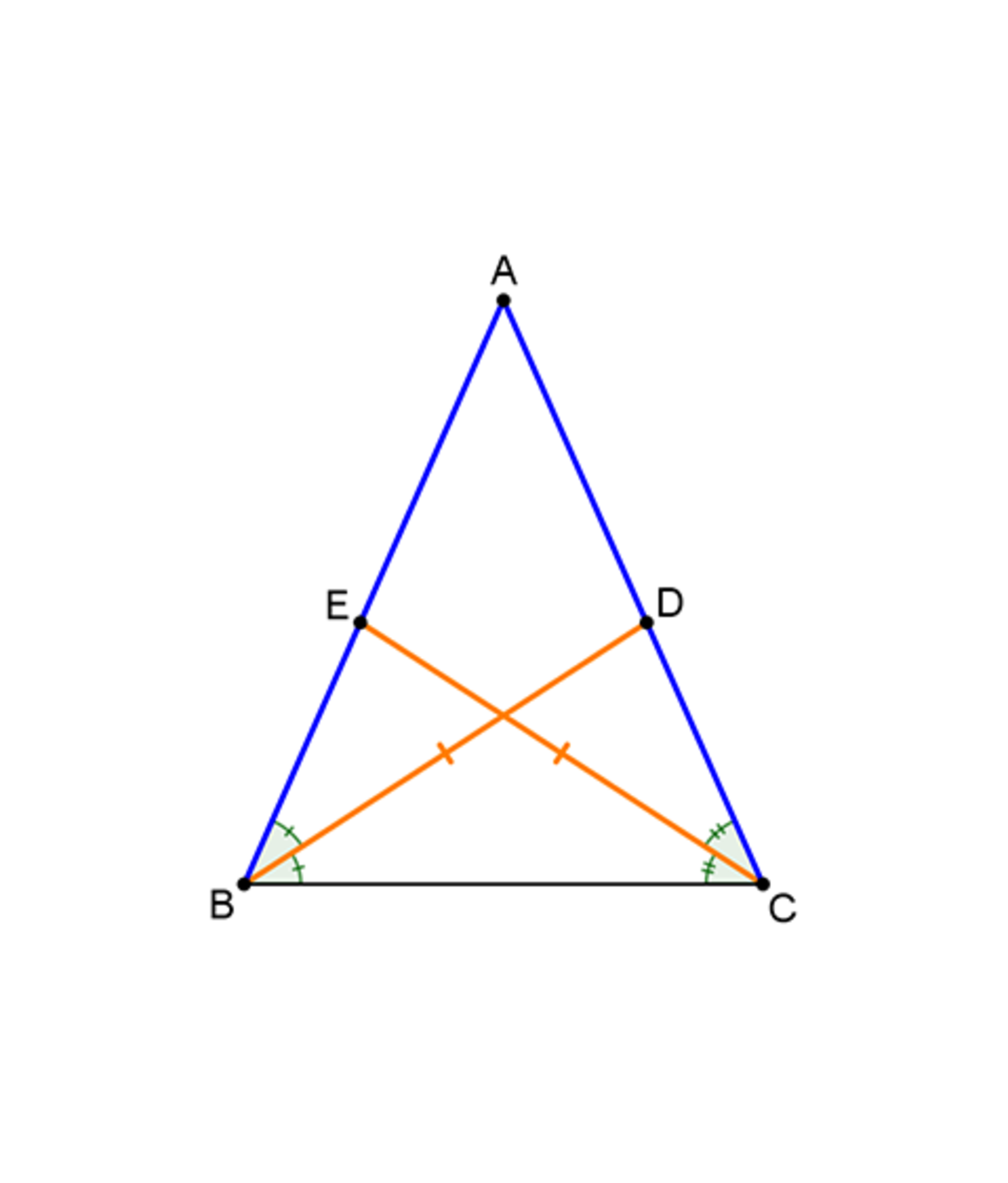Just for the isosceles?
 It is easy to see that if two sides of a triangle are equal (i.e. if the triangle is isosceles), then the corresponding angle bisectors are equal as well.
It is easy to see that if two sides of a triangle are equal (i.e. if the triangle is isosceles), then the corresponding angle bisectors are equal as well.
What about the converse ?
In a given triangle , and are the angle bisectors of and respectively.
If , is it necessarily true that ?
Hint : Angle bisector theorem might be useful.
This section requires Javascript.
You are seeing this because something didn't load right. We suggest you, (a) try
refreshing the page, (b) enabling javascript if it is disabled on your browser and,
finally, (c)
loading the
non-javascript version of this page
. We're sorry about the hassle.
By angle bisector theorem, w x = c a thus, x + w x = a + c a ⇒ b x = a + c a ⇒ x = a + c a b .
Similarly, w = a + c c b , y = a + b b c , z = a + b a c .
Moreover, ∣ ∣ B D ∣ ∣ 2 = a c − w x and ∣ ∣ C E ∣ ∣ 2 = a b − y z .
Since ∣ ∣ B D ∣ ∣ = ∣ ∣ C E ∣ ∣ , combining we get:
a c − w x = a b − y z ⇒ a c − ( a + c ) 2 a b 2 c = a b − ( a + b ) 2 a b c 2
Rearranging, ( b − c ) ( a 2 + b 2 + c 2 + 2 a b + 2 b c + 2 c a ) = 0 . The second factor is positive, hence b = c . Correct choice: Yes